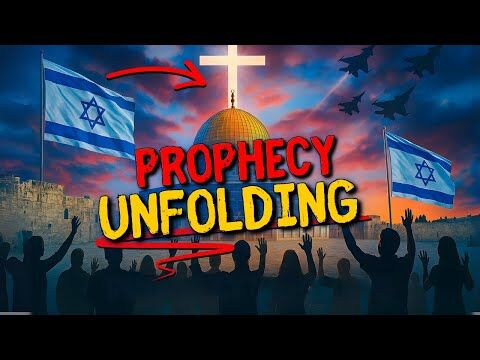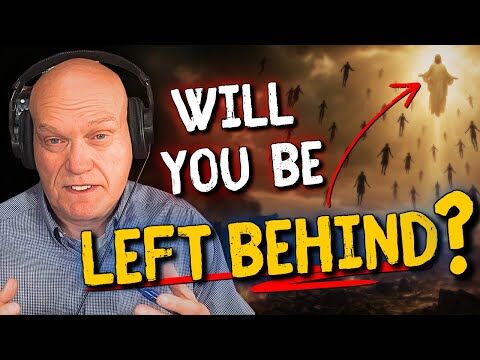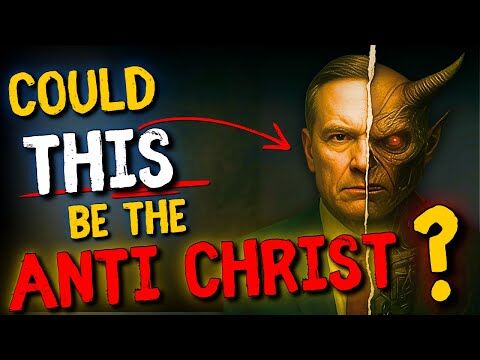In the city where Martin Luther King Jr. was killed, churches are still divided by race. But charismatic congregations are bridging the gap.
Step inside the Lorraine Motel in downtown Memphis, Tennessee, and you’re instantly faced with America’s ugly past. Room after room of compelling displays lead you through a vivid timeline of black American history, from slavery to the civil rights movement and beyond. You can’t help but feel the injury of injustice.
The motel, which has been transformed into the National Civil Rights Museum, is the site where Martin Luther King Jr. was assassinated April 4, 1968. The humble facade of the building has been left untouched, including the balcony where King was gunned down. It’s a freeze-frame of history in a city that keeps his memory alive.
King’s mission in Memphis was to lead a nonviolent protest in support of the city’s striking sanitation workers. But the slaying of the beloved human rights leader flung Memphis–and the nation–into exasperating grief, not only for the man, but also for King’s dream of a nation where character would prevail over color. Although progress has been made since those days, many would argue that racism still rules, especially in the South.
And especially in Memphis, where whites–and many white churches–fled to the suburbs during the 1960s.
African Americans here are not a minority. The city actually is about half black and half white. Willie Herenton, an African American, serves as mayor. The superintendent of schools, Carol Johnson, is black, as is the newly appointed chief of police, James Bolden.
Yet in Memphis, an observation often quoted by King is still true today: the most segregated time of the week is 11 a.m. on Sunday. Of the city’s 2,000 churches, few reflect the racial diversity of the community.
“It matters how we worship, who we worship with,” says David Waters, Faith and Values columnist for the Memphis daily newspaper, The Commercial Appeal. “And it says something that we’re not worshiping together.”
A Slow Process
Racism is a sensitive subject, and few people agree even on its definition. “If you line up 100 people, there are going to be 80 different definitions of racism,” one community leader said. And during the years, numerous commissions have tried to map out strategies for racial reconciliation in Memphis.
During the early 1990s, two churches sponsored a citywide campaign called “Love Thy Neighbor,” which brought black and white churches together for Easter services and other combined events. It fizzled out after a few years, but some bridges were built.
And in 1994, a Pentecostal convocation that has become known as “The Memphis Miracle” stirred a profound spirit of repentance and reconciliation between black and white church leaders (see related article on page 68).
Currently, a national organization called Churches Uniting in Christ is at work in Memphis. On Martin Luther King day in 2001, on the balcony of the Lorraine Motel, CUIC gathered leaders from 10 denominations who declared a commitment to worship, pray, take communion and be in mission together. The organization had two community worship services in Memphis in 2003, and more are planned.
“The 40-year dialogue is going to end, and we are going to live what we believe,” says CUIC facilitator Carla Meisterman. “You see people work together, but you really don’t see people worshiping together,” she says.
That may be because segregation in the church is as much about culture as it is about color. When you combine the deep roots of ethnic heritage with those of religious tradition, you have twice as much culture to learn–and unlearn.
Some people argue that joint services don’t take the community beyond token gestures, but Meisterman says they expose people to that sacred ground where ethnic and religious culture meet.
“The nuances of the different ways people worship in their own congregations–those are the things we’re learning,” she says. “It is so far from being just a token. And whether you’re conservative or not, both sides are going to have to give up their comfort level in how they worship in order to attain unity,” she says.
While some are catching the vision of integration, ethnic churches are still a magnetic force. And in some cases there is a resistance to integration within these ethnic congregations, whether they are Chinese Baptist, Greek Orthodox or African Methodist Episcopal.
Bennett believes some ethnic churches serve a special purpose for first-generation Americans who may encounter a language barrier in the greater community. But he believes future generations should integrate for the sake of unity.
“I’m not saying an all-white or all-black church is not of God,” Bennett says. “But for this community to get to a higher level of racial reconciliation, we need more churches to straddle the divide.”
Memphis is a unique stage for racial reconciliation partly because it is the headquarters of the largest black Pentecostal body in the country, the Church of God in Christ (COGIC). The city has 130 COGIC congregations, but few attempts to integrate have been successful.
Brandon Porter, pastor of the 3,500-member Greater Community Temple COGIC, tried to blend his church with different groups including whites and Hispanics. But his efforts failed, he says, because whites are less willing to engage in cross-cultural relationships. “The whites who attend our ministry are either in an interracial marriage, are in our drug-and-alcohol ministry or are running for office,” Porter says.
Memphis’ largest COGIC church is Temple of Deliverance, pastored by COGIC’s presiding bishop, Gilbert E. Patterson. Because of Patterson’s visibility on television (his sermons are broadcast weekly on Black Entertainment Television and other outlets), the church has a national following. Yet Patterson’s 14,000-member congregation is still predominantly black.
Why Integrate?
Does that mean we should simply stop trying to achieve a racial mix? After all, it seems that a lot of black churches prefer to have their own
cultural experience on Sunday mornings, while many white Christians have fled from our inner cities.
Racial reconciliation, many church leaders say, begins in the heart. When a Christian realizes God’s depth of love for every created soul, it should lead him to examine his own prejudices. But is it enough for Christians to live a “separate but equal” lifestyle as long as they are reconciled in their hearts?
When Charisma talked with leaders in Memphis about the challenge of reconciliation, they offered several key steps:
Recognize that we’re all in God’s family. “When you’re family, you all do life together,” says Bob Thomas, senior pastor at Church of the Harvest, an interracial charismatic church in Memphis. “We work together, we pray together, we do life together as family. And that’s the revelation, that we are family.”
When racism is recognized as a personal sin and not just a social issue, repentance is in order, but it must be demonstrated through relationships. Reconciliation must prove itself in our living rooms and at our dinner tables.
“It’s up to the people,” Thomas says. “The leaders have to model it, but it has to be a choice and a commitment that if you’re different from me, I’m going to love you anyway, and I’m going to enjoy the differences.”
One pastor, fairly new to Memphis, says a friendship he’s developed with two other local pastors is now drawing their culturally different congregations together. And the city is taking notice.
John Siebeling, who is white, left the mission field in Kenya to establish The Life Church of Memphis six years ago. He was frustrated when his efforts to create a racially diverse church in Memphis didn’t produce results during the first few years, especially since his “sending church” is African. The steadily growing church remained mostly white, despite outreaches to a diverse population.
“It did bother us,” he says. “We wanted a church that reflected the community, but we were so far from that.”
After Siebeling had preached about diversity and the sin of racism, people in his congregation thanked him. At the same time, a personal friendship with a Hispanic pastor and an African American pastor created an opportunity for relationships between their congregations.
Lester Basken’s 4,200-member Middle Baptist Church is located in a predominantly black community called Whitehaven–an area so named, Basken says, because it once provided a “haven” for whites. Basken realized it would take a disaster for genuine unity to become a reality among churches in Memphis.
“Whenever you have a disaster, people come together because their emotions are involved,” explained the 71-year-old African American leader. “But emotions soon fade,” he added.
Basken has lived in Memphis for some 60 years and has experienced segregation firsthand, but still he is hopeful. “One particular church can’t do it alone. There are so many things we can do if we bring our strengths together,” he told Charisma. Though he doesn’t expect unity meetings to bring an end to the separation among churches, he says they would be a good place to start.
In 2003, The Life Church of Memphis had three combined services with Aposento Alto, a Hispanic church led by Greg Diaz, and New Direction Christian Church, a primarily black congregation pastored by Stacy Spencer. Each church hosted a service. Plans for 2004 are underway.
Now, with a fast-growing attendance of about 800, The Life Church of Memphis is roughly 10 percent Latino and 10 percent African American, Siebeling says, and it has a small number of Asians. Siebeling is not sure exactly what broke the stronghold.
“It wasn’t my slick programming,” he says. “The longer I do this, the more I have questions and not answers, and then God will just surprise us with breakthroughs.”
Realize that reconciliation is a witness. Jesus prayed that His followers would be brought “to complete unity to let the world know that you sent me and have loved them even as you have loved me” (John 17:23, NIV). Clearly, unity is a witnessing tool, demonstrating the power of God’s love to unbelievers.
One Memphis church is so racially diverse it’s considered a model to the community. Christ the Rock Metro Church, a charismatic church with a weekly attendance of about 1,200, celebrated its 20th anniversary last year and was featured on a local newscast as one of the 10 most influential churches in Memphis during 1999.
“At Christ the Rock, you didn’t just come to church, you’re prophesying to Memphis!” preaches senior pastor Fred Bennett. “You’re prophesying by just being in the building!”
Bennett says racial integration must be more than a pastor’s pet project. “It can’t just stay at the leadership level,” he maintains, which is why he never stops weaving his message of “kingdom culture” into his black and white congregation.
Diversity was Bennett’s goal from day one, but the church didn’t look that way in the beginning. Reggie and Constance Webster were the first black couple to become members in 1987, four years after the church was started.
Although the congregation was white at the time, the pastor never stopped casting vision for unity. “It didn’t take long for us to know that was the pastor’s heart,” Reggie Webster says, “to have a church filled with all kinds of people.”
Through the years, as the church has diversified, some folks have become uncomfortable and have left, Webster says. He has since served on the church board of trustees. “Some people come and go, but the vision stays the same. It’s not a whim,” he says.
Today, an eye-catching view from the balcony shows just how far the church has come. “If you want to be part of this church, it’s because you want to live in the future, not the past!” preaches Bennett, as people rise to their feet shouting “Amen!” and “C’mon!” and raising black and white hands high in a spontaneous eruption of solidarity.
Celebrate diversity. The New Testament makes it clear that the gospel of Christ is for everybody. “The challenge is that we are human so we bring our own culture into the way we design worship,” Meisterman says.
She believes churches that are flexible at adapting their religious culture are more successful at achieving integration. “A new culture, a new relationship, a new way of understanding worship is being formed out of the spirit of those people,” she says.
“If you’re not comfortable with the culture, you better get comfortable,” Bennett says, “because like heaven, the church is a place for all nations.”
Prepare the Way for Revival
Although some see Memphis as a tradition-bound fortress of racism, others see it as a future hotspot for revival. Evangelist and pastor Rod Parsley brought his Mission America crusade to Memphis in October , and 700 people made decisions for Christ at the event, according to Bennett, whose church hosted it.
Parsley says God sometimes sends him to places before something momentous happens. “I was in Fort Lauderdale, Florida, in February 1999, and shortly afterward that area became the focal point of controversy in the 2000 election,” Parsley explains.
Does that mean racial healing in Memphis will be on the national news soon? Parsley says he doesn’t know what will take place there, but adds that “God doesn’t send me anywhere accidentally.”
Historically, revival comes on the heels of earnest prayer and unity, as it did in the Azusa Revival in the early 1900s. Although it requires the Holy Spirit’s power to bring unity, it’s our responsibility to repent first, pastors in Memphis say.
“Sometimes people are not willing to let go of the past and move into the future,” Thomas says. “Even if it’s not your culture, you still have that bond in the Lord Jesus Christ,” he says, “and that bond should be stronger than the color of your skin or the level of your education.”
And as each new decade takes us further from the past, some churches here are seizing the opportunity–and responsibility–to help the nation heal.
Has Your Church Diversified?
Pastors in Memphis are learning from trial and error.
Although many established churches find it hard to alter their culture, many new churches are starting out with a vision to be an earthly expression of God’s love for “every nation, tribe, language and people” (Rev. 14:6). Here’s what leaders in Memphis identify as keys to success:
Pray. Human effort alone won’t conquer the strongholds of division. “We’re serious about [reconciliation],”says Valerie Bennett, women’s pastor at the highly diverse Christ the Rock Metro Church in Memphis, Tennessee. “We prayed the
people in.”
John Siebeling, pastor of The Life Church of Memphis, a 6-year-old congregation working toward diversity, agrees. “I’m limited in my ability to relate to everyone,” Siebeling says, “but the Spirit of God is not.”
Get it right the first time. Because change is so difficult for churches, integration is easier for those who work toward it from the start, says Fred Bennett, senior pastor at Christ the Rock. “You’re pretty much stuck with the template you started out with,” he says, explaining that trajectory determines outcome.
But for those who are serious about making the change, he agrees that culture is key. “People mistakenly believe that adding a black pastor to your [white] staff will open the door to integration,” Bennett says. “No, you’ve got to change your culture!”
Be sensitive. A multiethnic church has to be sensitive to its cultural mix. Siebeling hired a Latino pastor and installed translation devices in an effort to
welcome Spanish-speaking people in regular services. “[The apostle] Paul said to be all things to all people, that I might win some,” he says.
Bennett makes his church available to guest speakers or musical styles that appeal both to black and white communities. But bringing the races together on Sunday morning doesn’t automatically translate into a close-knit community. Like a family growing through the stages of childhood, churches experience joys and tears, victories and obstacles.
“We haven’t got anything perfected,” Bennett says. “We’re open and vulnerable to criticism.”
Some people there complain that the choir is “too black,” while the worship team is “too white.” And several of the church’s 40-plus ministries draw one racial group over another. Sometimes it’s due to cultural reasons or sometimes to economic factors, Bennett explains. And sometimes it’s just a mystery.
A few years ago, although the church’s youth group was racially balanced, the African American kids didn’t seem interested in attending the group. Eventually, the youth leaders realized that in black church culture, activities revolve around youth choir, which is an anomaly in white charismatic churches.
But instead of establishing a youth choir then, which might have divided the kids, they started an all-inclusive children’s choir in an attempt to grow the concept into the culture of the church over time. Meanwhile, as youth leaders find new ways to draw kids of color into the youth group, the balance is coming, Bennett says.
Can We Keep ‘The Memphis Miracle’ Alive?
Ten years ago Pentecostals met in Memphis to repent of racism. But walls still divide us today.
In 1994, the Pentecostal Fellowship of North America (PFNA), historically an all-white organization, held a national conference in Memphis, Tennessee, to repent of its former racially exclusive practices. Leaders dismantled their old identity and created a new interracial ministry. The momentous convocation of black and white Pentecostal leaders made national news and became known as “the Memphis Miracle.”
The climax of the meeting occurred when black and white pastors tearfully washed one another’s feet as a symbol of brotherhood and repentance, and when a prophetic message was given by Jack Hayford, founding pastor of The Church on the Way in Van Nuys, California. The healing began when sounds of weeping could be heard throughout the auditorium.
“It was a shining moment,” says Bishop James D. Leggett of the International Pentecostal Holiness Church, current co-chair with Bishop George McKinney of what is now known as the Pentecostal and Charismatic Churches of North America (PCCNA). “It symbolized the coming together and the oneness of the group there,”Leggett told Charisma.
Most reconciliation leaders agree that such public events can spark a flame, but they acknowledge that the fire will die unless it’s fed by ongoing relationships at the grass-roots level. Although the Memphis Miracle helped tear down racial and denominational walls between leaders who were there, it’s hard to measure the tangible effect it has had on Pentecostals–or on the city of Memphis–over the long term.
African American pastor Lester Basken has seen the racial climate change dramatically during his more than 60 years in Memphis. Basken says churches have made some progress in the area of race relations, but some remain “somewhat segregated.”
“We are still separated because we are so independent of one another. We can pay our own bills and keep the church running without the other person,” Basken explains. To jump-start the process, Basken says, white and black churches alike need to come together in meaningful fellowship and continue what was started during events such as the Memphis Miracle.
The PCCNA has been co-chaired by various African American and white leaders since 1994, and its membership, which includes approximately 40 denominations, has greatly diversified, Leggett says.
On September 11, 2003, the organization adopted a positional statement into its constitution, condemning racism in all its forms and committing itself “to the message of reconciliation through the cross and unity in the power of the Holy Spirit, which has become a reality on the Day of Pentecost and was demonstrated at the outpouring of the Holy Spirit at Azusa Street at the beginning of the 20th century.”
For more information about the PCCNA or the Memphis Miracle, or to see a video clip of the 1994 event, visit www.pctii.
org/pccna.
Anahid Schweikert, a journalist and native of Wisconsin, lives in Memphis with her husband and two daughters.










































